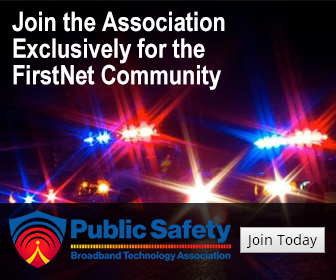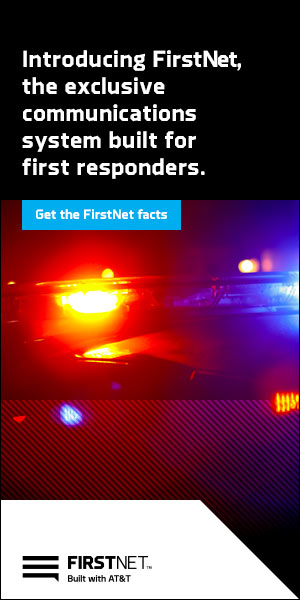Comm Center News
Honolulu’s 911 System Plagued by Staff Shortages (HI)
The Honolulu Police Department doesn't track how often the 911 system gets overwhelmed enough to play an automated message. But there are times when all of HPD's emergency response operators are assisting callers. READ FULL ARTICLE
REMSA Health Earns Distinction as Washoe County’s First Emergency Fire Dispatch … (NV)
REMSA Health announces that its Regional Emergency Communications Center has earned the designation of Emergency Fire Dispatch (EFD) Accredited Center of Excellence (ACE) from the International Academies of Emergency Dispatch (IAED). This distinction sets apart REMSA...
Taunton breaks ground on new public safety complex (MA)
TAUNTON, Mass. (WLNE) — Taunton officials participated in a groundbreaking ceremony Wednesday, May 1 for the city’s new public safety facility. Mayor Shaunna O’Connell, Taunton police and fire officials and other city elected officials were on hand for the event to...
Indiana leaders explore 911 communications
May 3—GOSHEN — As the only state treasurer in the United States who also serves as board chair of his state's 911 board, Daniel Elliott's history growing up in rural Indiana and his technology background gives him a unique understanding of some of the problems facing...
FCC proposes georouting rules for 988 calls to suicide, crisis lifeline (D.C.)
FCC commissioners last week voted unanimously to propose rules that would require carriers to provide a georouting solution for all wireless calls to 988 Suicide & Crisis Lifeline based on the caller’s physical location rather than the current method of using the...
Accidental fire suppression discharge sends 911 center workers to hospital (NJ)
An incident Thursday at the Warren County Public Safety Building and 911 Communications Center in Franklin Township sent county employees to the hospital. Outside contractors working on the 1024 Route 57 building accidentally triggered a fire suppression system...
Minnesota’s 911 manager in Virginia? Investigation prompts calls for change to state remote … (MN)
Two emergency communications managers with the State of Minnesota have left their leadership positions at the Department of Public Safety (DPS) after 5 INVESTIGATES raised questions about a telework agreement that allowed one of them to work full-time from the East...
Spokane County’s regional 911 dispatch center wants Spokane to either fully commit or provide its own dispatch
Similar to many on-again, off-again relationships, the board of the Spokane Regional Emergency Communications center has apparently hit a breaking point and wants the city of Spokane to commit: Are you in this relationship, or out of it? READ FULL ARTICLE
At 20 years old, 911 dispatcher has a ‘poise you can’t train’ (IL)
Alexis Echebarria loves her work, doesn’t seek recognition for her job as the first point of contact during an emergency READ FULL ARTICLE
Ramsey County’s new 911 center gives social workers key role (MN)
The staff who handle 911 calls throughout St. Paul and Ramsey County returned to their remodeled center this week, with embedded social workers now stationed in the middle of the room.
SF Emergency Dispatchers Struggle to Respond Amid Outdated Systems, Severe Understaffing (CA)
San Francisco emergency dispatchers — already dangerously understaffed and overworked — say that sporadic outages in their aging computer system are making their jobs even harder. READ FULL ARTICLE
Orange County E911 Center “Tree of Life” mural recognizes dispatchers (VA)
The Orange County Emergency Communications Center is excited to announce the addition of a “Tree of Life” mural, to recognize dispatchers for the lifesaving measures they provide day after day. Like leaves on a tree, communications officers provide a critical canopy...
‘You get a lot of burnout:’ Nationwide 911 dispatcher shortage has local agencies getting creative (FL)
JACKSONVILLE, Fla. — Across the country, law enforcement and fire rescue agencies are experiencing a shortage of 911 dispatchers. Between 2019 and 2022, one in four jobs at public safety communications centers were vacant, according to a recent report from the...
San Francisco Opens New 911 Dispatch Center (CA)
San Francisco, CA – Today Mayor London N. Breed and the San Francisco Department of Emergency Management (DEM) celebrated the opening of San Francisco’s newly renovated 911 Dispatch Center. The significant upgrades to the facility, located at 1011 Turk Street,...
DuPage 911 operator sues, saying employer discriminated against him (IL)
A 911 telecommunicator is suing DuPage Public Safety Communications, saying it has discriminated against him because of his race and ethnicity. READ FULL ARTICLE
APCO’s Steve Devine talks tech trends in 9-1-1
I recently sat down with Steve Devine, who was named Chief Technology Officer for the Association of Public-Safety Communications Officials International (APCO) this past December. APCO works to empower and educate public safety communications professionals. READ FULL...
Hamilton County Commissioners unanimously approve $14 million 911/EMA facility project (OH)
As National Telecommunicators Week wraps up, Hamilton County is moving forward with renovation plans on a new building for the County Emergency Communications Center. READ FULL ARTICLE
Sheriff’s Office and over 40 Partners Go Live (IL)
The Lake County Sheriff’s Office announces a successful implementation of a major 911 technological overhaul. In 2019, the Lake County Sheriff’s office in conjunction with the Lake County Emergency Telephone Systems Board (ETSB), with the assistance of Crowe...
White House recognizes National Public Safety Telecommunicators Week (D.C.)
ALEXANDRIA, Va. — The National Emergency Number Association praised President Biden for recognizing National Public Safety Telecommunicators Week (NPSTW) in a letter from the White House.
Law enforcement officials in 4 states report temporary 911 outages
(AP) - Law enforcement agencies in Nebraska, Nevada, South Dakota and Texas reported temporary outages to 911 services before saying hours later that services had been restored. It was not immediately clear what caused the outages or whether they were related.
Upcoming Webinar
4.9 GHz Band: Review of the FCC Order
On October 22, 2024, the Federal Communications Commission (Commission) released its Eighth Report and Order (Eighth R&O) regarding utilization of the 4940-4990 MHz (4.9 GHz) band that protects incumbent users as requested by us, the Public Safety Spectrum Alliance (PSSA). This Eighth R&O addresses a number of issues related to the use of this band by public safety. Please join us for a briefing on this order and how it impacts public safety.
This presentation will be led by Chief Jeff Johnson (ret) and Attorney Jason Karp, one of the nation’s leading experts in public safety spectrum regulations.
REGISTER
Subscribe to Comm Center News
Get the latest News, Articles, and Insights from AllThingsECC.com weekly in our newsletter.
Stay Up to Date With The Latest News & Updates
Share Your Story
Join our community to share your experience and connect and collaborate with colleagues.
Join Our Newsletter
Get the latest News, Articles, and Insights from AllThingsECC.com weekly in our newsletter.
Follow Us
Stay connected with the latestEmergency Communications News, Articles & Information.



